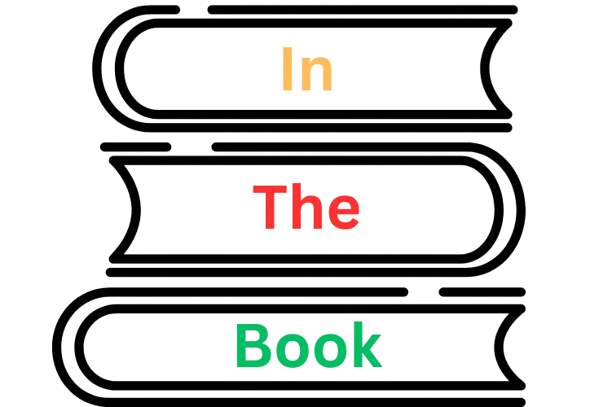The mental health field has witnessed remarkable changes in recent decades. Treatment options have expanded well beyond the traditional approach of medication and talk therapy. Modern mental healthcare now includes advanced technologies that can help patients who haven’t found relief through conventional methods.
For those dealing with severe depression and other challenging mental health conditions, two notable treatment options have emerged at the forefront of care. TMS therapy vs ECT represents distinct approaches to treating these conditions, each offering unique benefits and considerations for patients seeking relief.
![]()
Contents
- Understanding the Basics
- What is TMS Treatment?
- The ECT Approach
- Effectiveness Comparisons
- Clinical Outcomes
- Speed of Response
- Safety Considerations
- Side Effect Profiles
- Recovery Time
- Making an Informed Choice
- Patient-Specific Factors
- Insurance and Accessibility
- Looking Toward Recovery
- Treatment Environment
- Support Systems
- Future Developments
- Conclusion
Understanding the Basics
What is TMS Treatment?
TMS offers a modern solution for treating depression. The treatment works through magnetic fields that target specific areas of the brain linked to mood. During each session, the patient sits comfortably in a chair, fully awake and able to read or chat with their provider. Unlike more intensive procedures, TMS doesn’t require any sedation or significant recovery time.
The straightforward nature of TMS sessions has made it an appealing option for many people seeking depression treatment. Patients can drive themselves to and from appointments and return to their regular activities immediately afterward. This convenience, combined with its non-surgical approach, has led to increasing acceptance in the medical community.
The ECT Approach
ECT vs TMS treatment differs fundamentally in its mechanism and historical context. Electroconvulsive therapy involves inducing controlled seizures under general anesthesia. While this might sound intimidating, modern ECT bears little resemblance to its portrayal in popular media, having evolved significantly over decades of medical advancement. Modern ECT utilizes precise electrical currents, sophisticated monitoring equipment, and tailored treatment protocols that prioritize patient safety and comfort.
Effectiveness Comparisons
Clinical Outcomes
When examining TMS treatment vs ECT, both approaches can effectively treat depression, though they often serve different patient populations. ECT typically demonstrates better results for severe cases, particularly when immediate intervention becomes necessary due to acute suicidal ideation or catatonia.
However, TMS therapy shows promising results for moderate to severe depression, especially in patients who haven’t responded well to medication but don’t require urgent intervention.
Speed of Response
The timeline for improvement varies between these treatments. ECT vs TMS typically shows faster initial results, with some patients reporting significant improvement after just a few sessions.
TMS requires more sessions over a longer period, usually 4-6 weeks of daily treatments, but its gradual approach often leads to sustained improvement with potentially fewer maintenance sessions needed long-term.
Safety Considerations
Side Effect Profiles
When comparing TMS therapy vs ECT, side effect profiles differ significantly in both nature and duration. TMS patients commonly report mild headaches or scalp discomfort, which usually subsides after the first few sessions. Some experience temporary tinnitus or light-headedness, but these effects typically resolve within hours.
ECT’s side effects can be more pronounced, potentially including temporary memory issues and confusion, though these typically resolve within weeks or months.
Modern ECT techniques have significantly reduced cognitive side effects through electrode placement optimization and precise dosing protocols. However, patients might experience muscle soreness, nausea, or headaches immediately following treatment.
Recovery Time
Recovery expectations vary considerably between the treatments. After TMS sessions, patients can immediately drive home and resume normal activities, including work or school. This minimal disruption to daily life makes it particularly appealing for professionals and students.
ECT requires recovery time from anesthesia and may necessitate taking time off work or arranging transportation. Initial confusion typically clears within hours, but patients are advised not to drive or make important decisions on treatment days. Some patients might need to adjust their work schedules during the acute treatment phase.
Making an Informed Choice
Patient-Specific Factors
Healthcare providers consider numerous factors when recommending either treatment. These include severity of depression, previous treatment responses, medical history, patient preferences regarding treatment approach, schedule flexibility, and support system availability. Additionally, providers evaluate factors such as pregnancy, history of seizures, presence of metal implants, and other medical conditions that might influence treatment selection.
Insurance and Accessibility
Both TMS treatment vs ECT coverage varies among insurance providers and geographical locations. While ECT has longer-standing insurance coverage due to its established history, TMS therapy increasingly receives coverage as it becomes more widely accepted.
Some facilities offer payment plans or sliding scale fees to make these treatments more accessible to patients without comprehensive insurance coverage.
Looking Toward Recovery
Treatment Environment
The treatment environment differs significantly between approaches. TMS sessions occur in outpatient settings, allowing patients to maintain their daily routines and social connections. The comfortable, clinical office setting often helps reduce anxiety about the treatment process.
ECT typically requires a hospital setting, at least initially, though some patients later transition to outpatient care. The medical environment provides comprehensive monitoring but may feel more intensive for some patients. Modern facilities often work to create calming environments that help reduce patient anxiety.
Support Systems
Regardless of choosing ECT vs TMS treatment, strong support systems play crucial roles in recovery. Family involvement, therapeutic support, and lifestyle modifications complement both treatments’ effectiveness. Healthcare providers often recommend combining either treatment with psychotherapy to address underlying issues and develop coping strategies.
Future Developments
Both treatments continue evolving through technological advances and protocol improvements. Newer TMS protocols explore accelerated treatment schedules, while ECT advances focus on minimizing cognitive effects while maintaining therapeutic benefits.
Conclusion
The choice between TMS therapy and ECT depends on individual circumstances, symptoms, and preferences. Both treatments hold important places in modern psychiatric care, offering hope to patients who haven’t found relief through traditional approaches.
Healthcare providers continue working closely with patients to determine the most appropriate treatment path, considering factors beyond mere clinical effectiveness to include quality of life and practical considerations.
For anyone considering these treatments, consulting with qualified mental health professionals remains essential for developing an appropriate treatment plan. These professionals can provide detailed information about how each option might fit specific situations and help navigate the decision-making process while addressing concerns and expectations.
This ongoing evolution of both treatments demonstrates psychiatry’s commitment to developing more effective, patient-friendly approaches to mental health care. As advancements continue, both TMS and ECT adapt to better serve patient needs while maintaining their crucial roles in mental health treatment. The future holds promise for even more refined and personalized approaches to neuromodulation therapy.

Ross, an exam specialist with a passion for education, writes comprehensive articles on exam results and admit cards. His expertise ensures students receive reliable information and useful tips to excel in their exams.

























